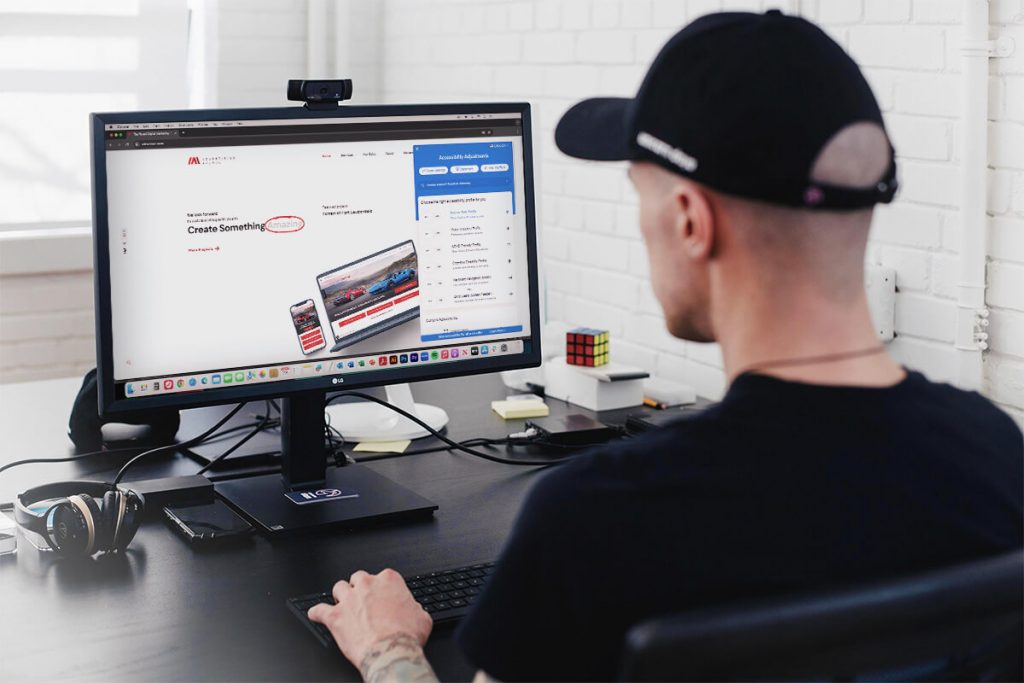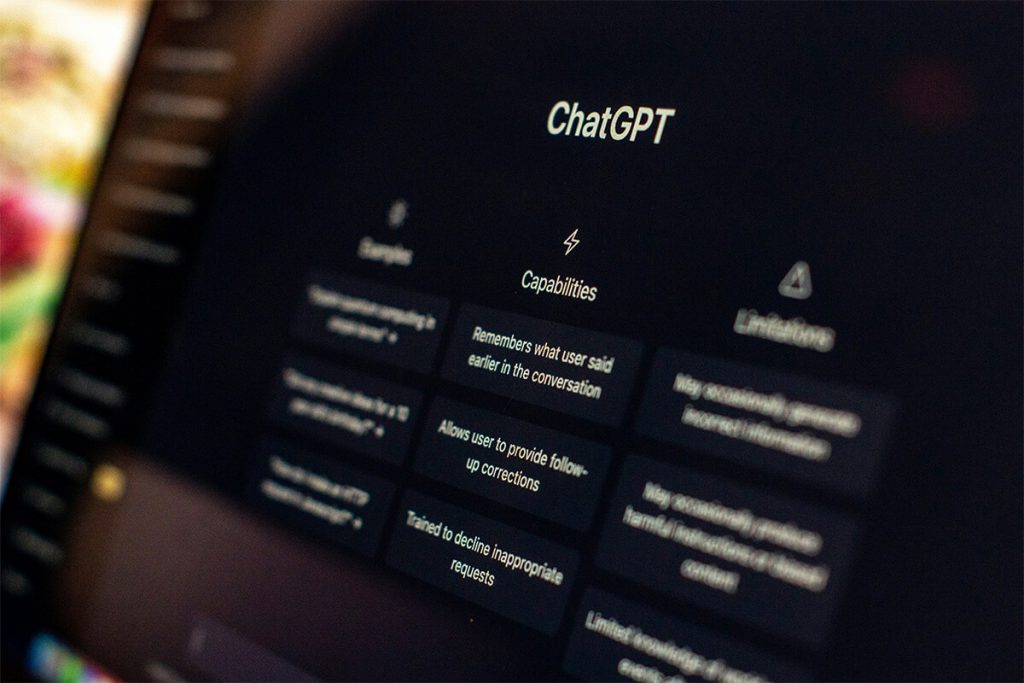
The Impact of AI on the Future of Web Design
Welcome to the forefront of web design, where the future is unfolding before our eyes with the help of one powerful ally: artificial intelligence (AI). As someone who’s been knee-deep in the digital trenches for years, I can tell you firsthand that the impact of AI on the future of web design is nothing short of mind-blowing. So, buckle up as we embark on this exhilarating journey into the realm of AI-driven design!
1. The Evolution of AI in Web Design: From Novelty to Necessity
Let’s take a stroll down memory lane, shall we? Back in the day, AI in web design was little more than a novelty—a chatbot here, an automated form there. But oh, how times have changed! Today, AI is the driving force behind some of the most cutting-edge design tools and techniques known to humanity. From predictive analytics to machine learning algorithms, AI has come a long way, baby!
But let’s not forget the humble beginnings of AI in web design. In its infancy, AI was seen as a mere gimmick, with limited capabilities and applications. However, as technology advanced and our understanding of AI deepened, its potential for revolutionizing web design became increasingly apparent.
With each passing year, AI became more sophisticated, evolving from basic chatbots to powerful machine learning algorithms capable of analyzing vast amounts of data and making intelligent design decisions in real-time. Today, AI has transcended its status as a novelty and has firmly established itself as a necessity in the ever-evolving world of web design.
Its ability to streamline workflows, enhance user experiences, and drive conversions has cemented its place as an indispensable tool for digital marketers and web designers alike.
2. Getting Creative with AI-Powered Design Tools
Nowadays, web design isn’t just about slapping together some code and images—it’s an art form, a delicate dance between creativity and functionality. And with the rise of AI-powered design tools, that dance has become even more exhilarating. Picture this: you sit down at your computer, coffee in hand, ready to tackle that new website project. But instead of staring blankly at a blank canvas, you fire up your trusty AI-powered design tool, and suddenly, the possibilities are endless.
These tools aren’t just your run-of-the-mill website builders; they’re virtual Swiss Army knives of creativity, equipped with a plethora of features designed to make your design process smoother, smarter, and more satisfying. Gone are the days of agonizing over color palettes and font choices—AI-powered design tools analyze user behavior, suggest layout improvements, and even generate personalized content tailored to your target audience.
But here’s where things get really interesting: these tools aren’t just passive bystanders in the design process—they’re active collaborators, working alongside you to bring your vision to life. Imagine brainstorming ideas with a virtual design assistant that understands your aesthetic preferences, anticipates your needs, and offers creative suggestions in real-time. It’s like having your very own design genie in a digital bottle, granting your every wish with a few clicks of the mouse.
But perhaps the most remarkable thing about these AI-powered design tools is their ability to adapt and evolve over time. As they analyze more data, learn from more experiences, and interact with more users, they become increasingly sophisticated, fine-tuning their algorithms to deliver even more accurate insights and recommendations. It’s a feedback loop of creativity and innovation, with AI leading the charge into uncharted territory.
3. Crafting Seamless User Experiences with AI
Ah, user experience—the holy grail of web design. Thanks to AI, crafting seamless user experiences has never been easier (or more fun)! Picture this: AI algorithms that analyze user data in real-time to optimize website navigation, reduce bounce rates, and increase conversions. It’s like having a personal UX guru whispering in your ear every step of the way.
Another groundbreaking example is Adobe Sensei, an AI-powered platform that seamlessly integrates with Adobe’s suite of design tools. Adobe Sensei harnesses the power of machine learning to automate mundane tasks, streamline workflows, and provide intelligent insights for designers. For UX designers, this means leveraging AI-driven features like auto-generating responsive layouts, recommending design elements based on user personas, and predicting user behavior to optimize conversion paths.

Furthermore, AI-driven chatbots have emerged as powerful tools for enhancing the user experience on websites and applications. Platforms like Drift and Hubspot utilize natural language processing (NLP) algorithms to understand user inquiries and provide personalized assistance in real-time. By analyzing past interactions and user data, these chatbots can anticipate user needs, offer relevant recommendations, and guide visitors through the conversion funnel with ease.
But perhaps the most exciting aspect of AI-driven UX design is its ability to adapt and evolve over time. As these AI algorithms continue to learn from user interactions and feedback, they become more adept at predicting user behavior, identifying pain points in the user journey, and proposing innovative solutions to enhance the overall experience.
4. Adaptive Design: Making Every Device Feel Like Home
Gone are the days of squinting at tiny smartphone screens or wrestling with wonky tablet layouts. With AI-powered adaptive design, your website will look and feel right at home on any device, from desktop to smartphone and everything in between. Say goodbye to pixelated images and wonky formatting—AI’s got your back!
One stellar example of AI-powered adaptive design in action is Elementor, a popular WordPress page builder plugin that offers robust tools for creating responsive websites without any coding knowledge. Elementor’s intuitive drag-and-drop interface and AI-driven features empower users to build stunning, mobile-friendly layouts that automatically adjust to different screen sizes. With dynamic content widgets and flexible design options, Elementor ensures that your website looks great and functions seamlessly on desktops, tablets, and smartphones alike.
Furthermore, AI-driven content management systems (CMS) like WordPress are revolutionizing the way websites are built and managed. With features like block-based design and responsive editing, WordPress empowers users to create flexible, adaptive layouts that automatically adjust to different screen sizes. AI-driven plugins and themes further enhance the adaptive capabilities of WordPress websites, ensuring a consistent and user-friendly experience across devices.
5. Breaking Down Barriers: AI and Web Accessibility
Accessibility is about more than just compliance—it’s about inclusivity, dignity, and respect for all users. That’s where AI comes in, my friends. With image recognition for visually impaired users and natural language processing for voice-controlled interfaces, AI is breaking down barriers and making the web a more welcoming place for everyone.
One groundbreaking example of AI-powered web accessibility is AccessiBe, a comprehensive platform that leverages AI and machine learning to automate the process of making websites accessible to users with disabilities. AccessiBe utilizes advanced image recognition algorithms to generate alternative text for images, making visual content accessible to individuals with visual impairments. Additionally, its natural language processing capabilities enable voice-controlled interfaces, allowing users to navigate websites using voice commands, thus empowering individuals with motor disabilities.

But AccessiBe goes beyond simply addressing the technical aspects of web accessibility—it prioritizes the user experience, ensuring that individuals with disabilities can interact with websites in a manner that is intuitive, dignified, and respectful. By automating the implementation of accessibility features and providing customizable options for users with diverse needs, AccessiBe fosters a sense of inclusivity and empowerment within the digital realm.
Moreover, AccessiBe’s AI-driven approach to web accessibility extends beyond compliance—it embraces the principles of universal design, striving to create digital experiences that are not only accessible but also delightful and engaging for all users. By incorporating user feedback and continuously refining its algorithms, AccessiBe remains at the forefront of innovation in accessibility, paving the way for a more inclusive and equitable digital future.
6. Personalization: The Name of the Game
Let’s talk about personalization, shall we? Thanks to AI, tailoring the user experience to individual preferences and behavior patterns is easier than ever. Whether it’s recommending personalized content or creating custom user journeys, AI’s got a knack for making every interaction feel like it was made just for you.
Imagine logging into your favorite online store and being greeted with product recommendations that perfectly align with your interests and past purchase history. That’s the power of AI-driven personalization in action. By analyzing vast amounts of data, including browsing history, purchase behavior, demographics, and even social media interactions, AI algorithms can identify patterns and preferences unique to each user, enabling businesses to deliver targeted content and recommendations that resonate on a personal level.
But personalization goes beyond just recommending products—it extends to every touchpoint of the user journey. From personalized email marketing campaigns that address recipients by name and offer tailored promotions, to dynamic website content that adapts based on user preferences and past interactions, AI’s ability to customize the user experience knows no bounds.
7. SEO Superpowers: Unleashing the Power of AI
SEO, the ever-elusive puzzle that every digital marketer strives to solve. It’s a game of cat and mouse with search engine algorithms, where the rules are constantly changing, and the stakes couldn’t be higher. But fear not, my fellow marketers, for AI is here to usher in a new era of SEO enlightenment!
Gone are the days of blindly guessing which keywords will propel your website to the top of the search results. With AI-driven insights into keyword optimization, content strategy, and link building, you’ll have the power to dissect search engine algorithms with surgical precision and emerge victorious in the battle for SERP supremacy.
Let’s start with keyword optimization, shall we? Traditionally, SEO experts would spend hours poring over keyword research tools, trying to identify the golden nuggets that would attract the most traffic. But with AI, keyword optimization becomes a breeze. Algorithms can analyze vast troves of data to uncover hidden patterns and trends, identifying high-performing keywords that your competitors may have overlooked. Say goodbye to the days of keyword stuffing and hello to a more nuanced approach to SEO that focuses on relevance and intent.

But AI doesn’t stop there. AI tools like ChatGPT also revolutionize content strategy, helping you create compelling, data-driven content that resonates with your target audience. By analyzing user behavior, sentiment analysis, and topic clustering, AI can uncover the topics and themes that are most likely to capture the attention of your audience and drive engagement. From blog posts to videos to infographics, AI-powered content strategy ensures that every piece of content you create is optimized for maximum impact.
And let’s not forget about link building, the backbone of any successful SEO campaign. In the past, link building was a labor-intensive process that involved hours of outreach and negotiation. But with AI, link building becomes more efficient and effective than ever before. AI algorithms can analyze backlink profiles, identify high-quality link opportunities, and even automate the outreach process, freeing up your time to focus on more strategic initiatives.
8. Embracing the Future: Challenges and Opportunities
Of course, no journey into the future would be complete without a few bumps in the road. From privacy concerns to algorithm bias, there are plenty of challenges to overcome. But fear not, brave adventurers, for the opportunities presented by AI-powered web design far outweigh the risks. So, strap on your digital boots and get ready to blaze a trail into the unknown!
Privacy concerns loom large in an era where data is king, and personal information is more valuable than ever. With AI-powered web design, there’s the potential for sensitive user data to be collected, analyzed, and utilized in ways that raise eyebrows and alarm bells. However, it’s crucial to remember that with great power comes great responsibility. By prioritizing transparency, consent, and data security, we can mitigate privacy risks and ensure that users feel safe and empowered when interacting with AI-driven websites and applications.
Another challenge we must grapple with is algorithm bias. As powerful as AI may be, it’s not immune to the biases and prejudices that exist within our society. If left unchecked, these biases can perpetuate inequality and discrimination, undermining the very principles of inclusivity and diversity that AI-powered web design seeks to promote. By fostering a culture of diversity and inclusion within the tech industry and implementing safeguards to detect and mitigate bias in AI algorithms, we can ensure that our digital creations reflect the richness and diversity of the human experience.
The Future is Now
Well, folks, we’ve reached the end of our journey into the brave new world of AI-driven web design. From adaptive layouts to personalized user experiences, the impact of AI on the future of web design is undeniable. So, as you venture forth into the digital wilderness, remember this: with AI by your side, the possibilities are endless. Here’s to a future filled with innovation, creativity, and jaw-dropping web experiences.
Ready to harness the power of AI for your web design endeavors? Contact Advertising Avenue today and let us help you unlock the full potential of AI-driven web design. Whether you’re looking to optimize your website for search engines, enhance user experiences, or stay ahead of the curve with cutting-edge AI technologies, our team of experts is here to guide you every step of the way. Together, let’s shape the future of web design and create digital experiences that leave a lasting impression.





